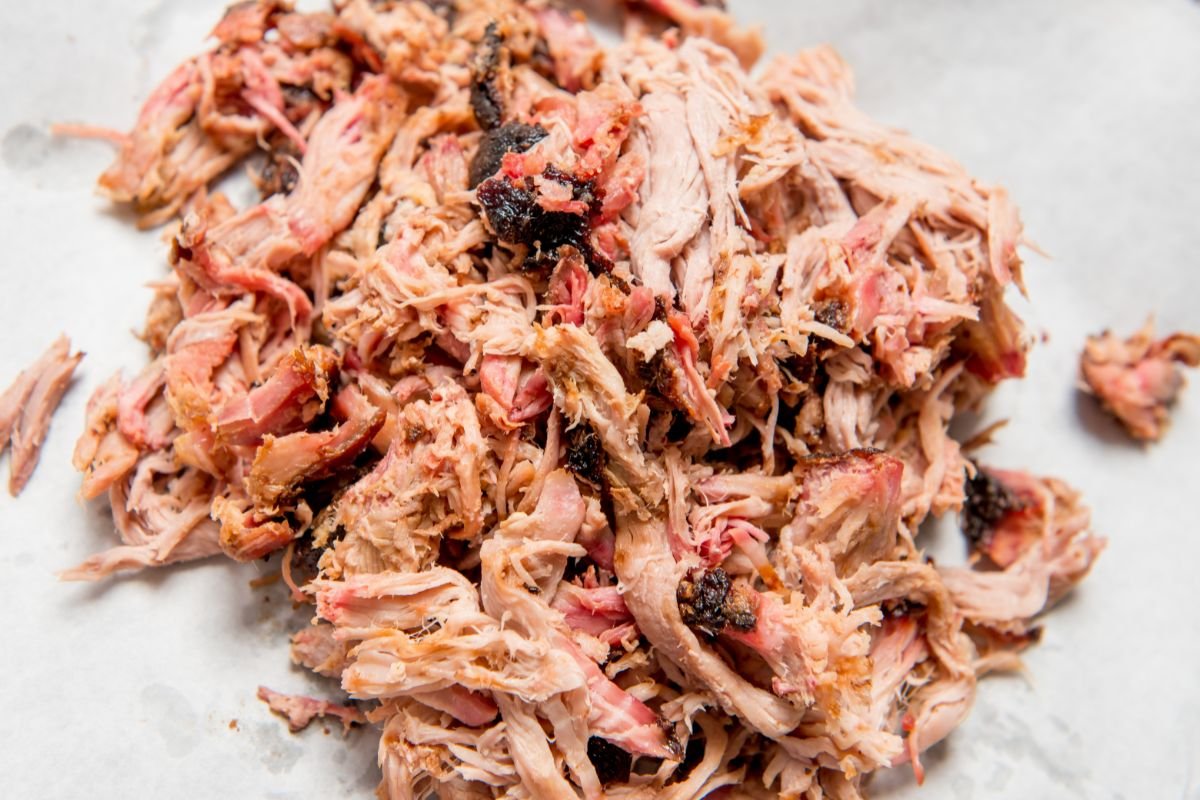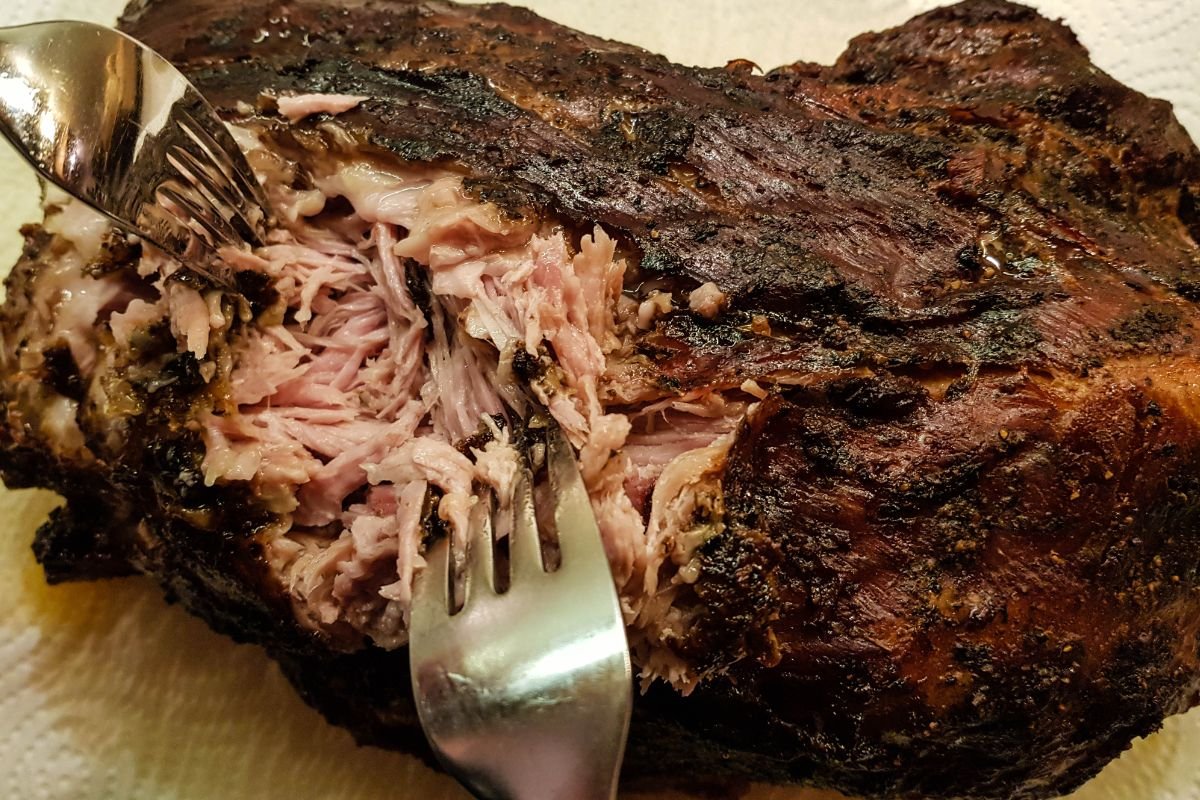Pulled pork is a traditional Southern BBQ food which has become popular all over the world with whole restaurants dedicated to the delicious smokey dish.

Smokehouses, restaurant chains and even supermarkets have been getting in on the action, especially in the UK.
If you fancy yourself as a bit of a grill master or just love to cook, you may be wondering how to do the dish justice and serve up something mouthwateringly tasty at your next family gathering or game day.
Different BBQ fans will have differing opinions on how to cook it, where to cook it and how long it needs to rest before serving.
After all, food is all about personal preference and trial and error is the only way you’ll find out what you like best.
If you’re new to grilling or just need some advice about how long your pork shoulder should rest, we’ve done the research for you.
Why Should You Use A Pork Shoulder?
Pork shoulder has always been the traditional choice when it comes to making pulled pork.
This is because it has the optimum fat content that creates a tender melting sensation when you cook it slowly either over wood or in a slow-cooker.
Where you cook it ultimately depends on what you have available.
Grocery stores usually sell the shoulder of the pork in two different cuts: the Boston butt and the picnic roast.
The butt comes from the top of the shoulder and usually has a lot of fat which contributes to the flavor of the overall dish.
The picnic roast is the lower half of the shoulder area down to the top part of the foreleg. This cut becomes extremely tender when slow-cooked.
If you get a bit confused when trying to locate it, ask for these cuts at the meat counter.
If you can’t get a whole shoulder, one of these will do.
Bones usually come with the meat but you can ask for a cut without it if you don’t want the extra hassle of dealing with the bone.
Why Does Pulled Pork Need To Be Rested?
Many meat dishes such as pulled pork, steak, and lamb require you to rest them before serving as meat is a muscle and contains a lot of water, which compresses and contracts during the cooking process, expelling out the moisture.
Resting allows the juices from the meat to redistribute and reabsorb to lock in the tenderness and stop the meat from becoming overcooked.
If you overcook the pork shoulder, this may mean you can’t shred it later on.
As a general rule of thumb, thick cuts of meat should be left to rest in a warm area such as the top part of the oven for 10-15 minutes or half the time you spent cooking it.
If you cover smaller cuts of meat with aluminium foil, it can trap the heat inside and continue to cook the dish.
What Happens If You Don’t Let Pork Shoulder Rest?
To create pulled pork the meat is slow-cooked to allow the meat to become juicy, tender and full of flavor.
If you don’t let the meat rest after cooking, all the juices will run out of the meat when you start to shred it.
Therefore you would’ve wasted time slow-cooking it as it will become tough and dry.
Should You Cover Pulled Pork Whilst It’s Resting?
Leaving the pork uncovered on the kitchen counter when resting means that it will naturally cool much faster.
Pork tends to have good heat retention over long periods of time, so depending on how long you wait until shredding and serving the meat should be okay.
Covering the meat loosely with aluminium foil stops it from cooling too much which helps in the process of shredding the pork.
If the meat is already at the target temperature, be warned this can lead to overcooking.
A good tip is to make sure it’s on a cutting board with indents or grooves to allow for any juices to remain on the bottom and be absorbed.
Different people advocate for different methods.
Factors such as how many people you’re cooking for or if you’re preparing a meal in advance can influence your decision to cover the meat or not.
Sometimes patience is the most important part of the process.
How Long Should Pork Shoulder Rest For?

The general consensus is that pork shoulder should rest for a recommended 15 minutes minimum.
An ideal resting time is between 30-45 minutes for a six to eight-pound pork butt to reabsorb as much moisture and juices as possible.
It is suggested that you should take the pork off the heat when it gets to 195℉ as it will continue cooking as it rests.
There can be as much as a 10-degree increase in the head from the moment you pull it off the heat to the time you start to shred it.
Before you decide to start shredding the pork, remove any excess fat that wasn’t removed during the cooking process.
Does the Position of the Pork Butt During Grilling Affect the Resting Time Before Pulling?
When grilling pork butt, the positioning of the fat side can affect the resting time before pulling. Placing the fat side up allows the fat to render and baste the meat, resulting in a more tender and flavorful dish. This can reduce the resting time needed before pulling the pork.
Remember To Check The Internal Temperature
If you don’t already own a meat thermometer we would suggest getting one, you can get one cheaply online or in a kitchen supply store.
Cooking meat at the right temperature is crucial not only for killing off any bacteria but also to break down the fat in the tissues.
It is recommended that pork be cooked to an internal temperature of 145℉ to be considered safe to eat.
When cooking something like pork butt for pulled pork, temperatures need to be much higher at around 195-205℉ to break down the tissue giving you a tender end result.
As pulled pork is traditionally cooked on a smoker, “low and slow” is typically how it’s cooked, with an internal air temperature of the smoker sitting at 225℉.
How long your pork takes to cook depends on how big the joint is and what you’re cooking it on.
We would advise you to research what works best for your cooking instrument.
How To Shred Your Pork
This is where your hard work pays off.
After the long cooking process and resting period, it’s time to shred the meat to give it the classic ‘pulled pork’ look and texture.
There are a variety of shredding tools available, but you can just as easily use two forks or even your fingers.
First, remove any bones or excess fat. Then you’re going to want to cut the joint into chunks rather than just going for the whole thing.
Shredding claws make this process quick and easy, if you’re planning on making the meal frequently they may be a great accessory to have.
Holding the piece of meat still will one claw, you can use the other to shred it from top to bottom.
If you’re using forks you essentially tackle it in the same way, using one fork to steady the meat and one to rip it apart.
Using forks may take a little longer than other methods.
When using your hands, if the meat is tender enough it should start to fall apart very easily, however, it’s likely to be very hot and you may be liable to burn your hands.
In Summary
To sum up, there are a few things you need to make sure of when cooking pulled pork.
Using the right cut of meat is important, many experts recommend using the shoulder as it tends to produce the most flavor and is the most tender when cooked.
Regardless of how you’re cooking the meat, ensure that you use a thermometer to get the internal temperature of the shoulder to around 195℉ before even thinking about taking it off the heat.
Resting the joint for 30 minutes will give you the best chances of retaining and redistributing the juices around the meat for a succulent and delicious meal.
Hopefully, we’ve cleared up any questions you had in regard to making the perfect pulled pork dish. Happy slow-cooking!
